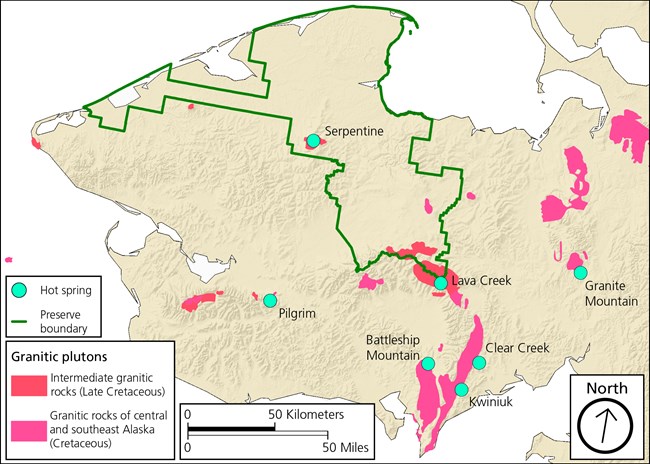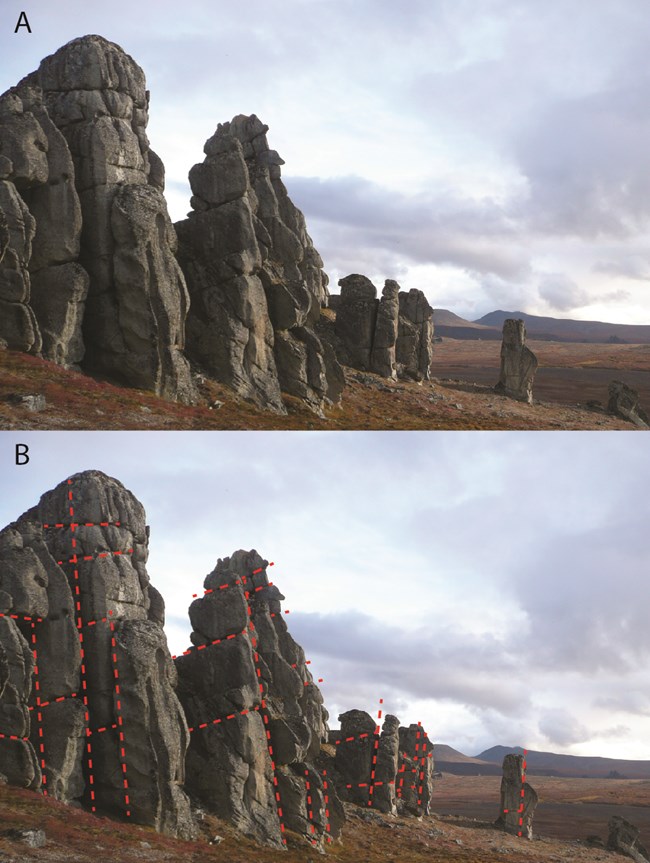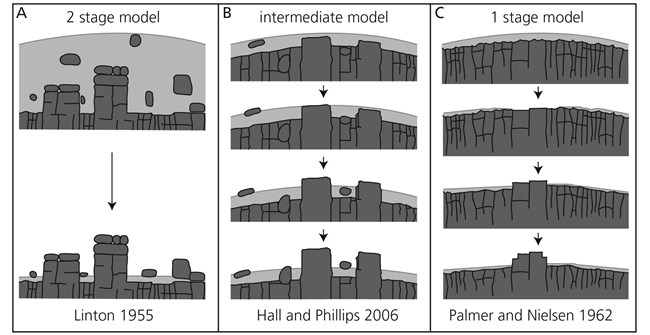Last updated: August 14, 2020
Article
Geology of Serpentine Hot Springs

NPS Photo - Savannah Glasscock

NPS

NPS
Oonatut Granit Complex
The Oonatut Granite Complex is the largest of seven tinbearing granite intrusions that form a 170 km- (105 mi-) long belt across northwestern Seward Peninsula. These intrusions have tin lode or placer deposits associated with them, and in the Lost River area tin was mined commercially. K-Ar radiometric dates of the granites range from 80.2 ± 3 to 69.2 ± 2 million years ago, with the Oonatut Granite Complex being the youngest of the seven intrusions. The Oonatut Granite Complex is composed of biotite granite and has distinct zones defined by changes in crystal size, petrology, and geochemistry. The outermost zone grades from fine-grained equigranular (crystals all the same size) granite to coarse-grained porphyritic (crystals are two distinct sizes) granite. This zone differs in terms of petrology and geochemistry from the rest of the tin-granite belt and is instead much more similar to the Darby pluton (found in the Darby Mountains). The rest of the Oonatut Granite Complex is split into three textural facies that can be found in all the other tin-bearing granites on the Seward Peninsula: medium- to very coarse-grained seriate (crystals are different sizes) biotite granite, porphyritic biotite granite, and fine- to medium-grained equigranular to subequigranular biotite granite.
NPS
